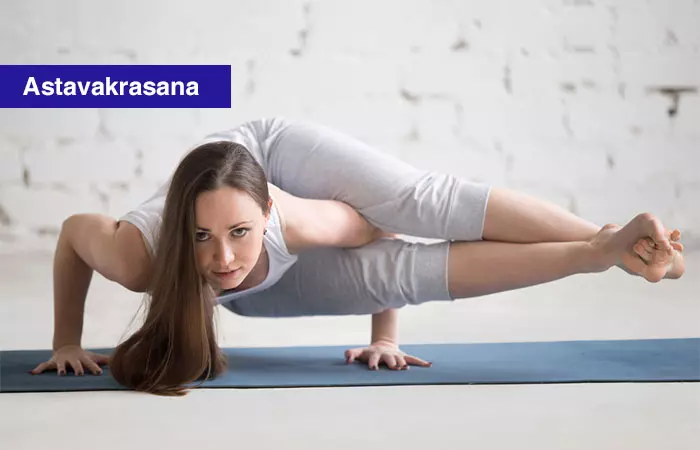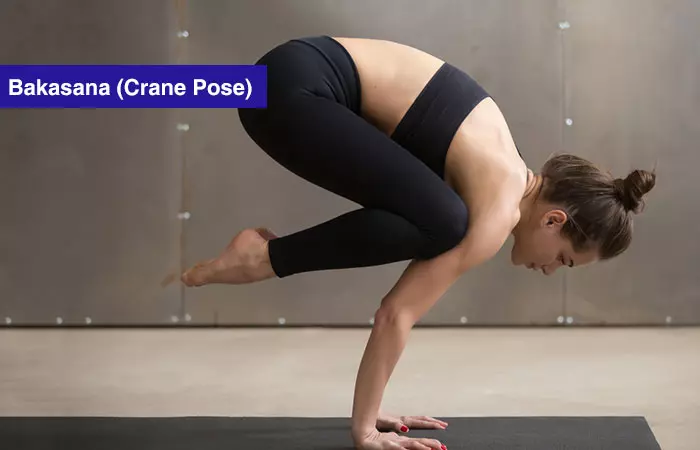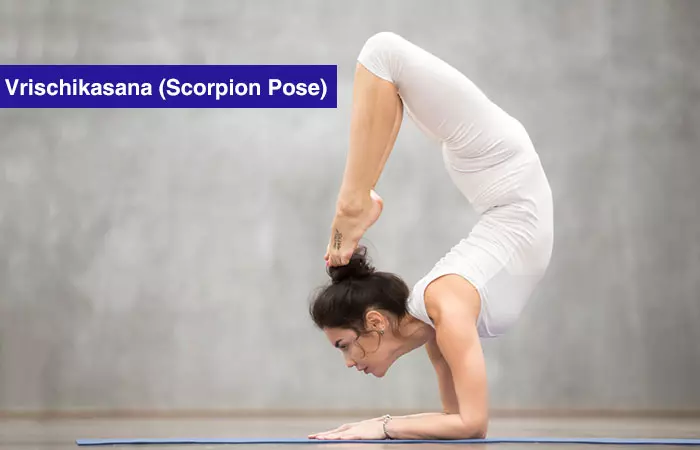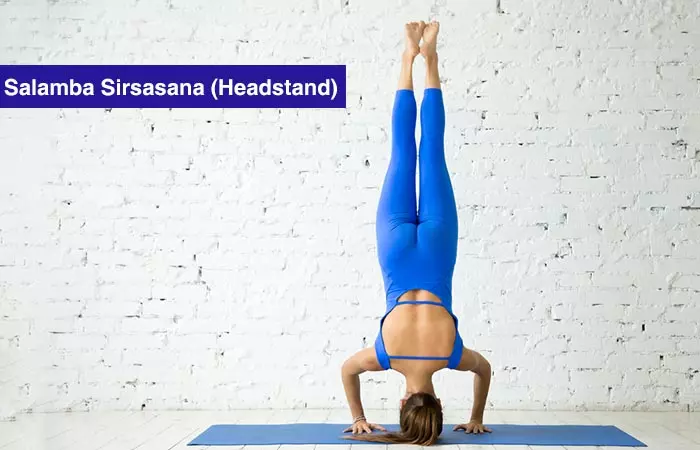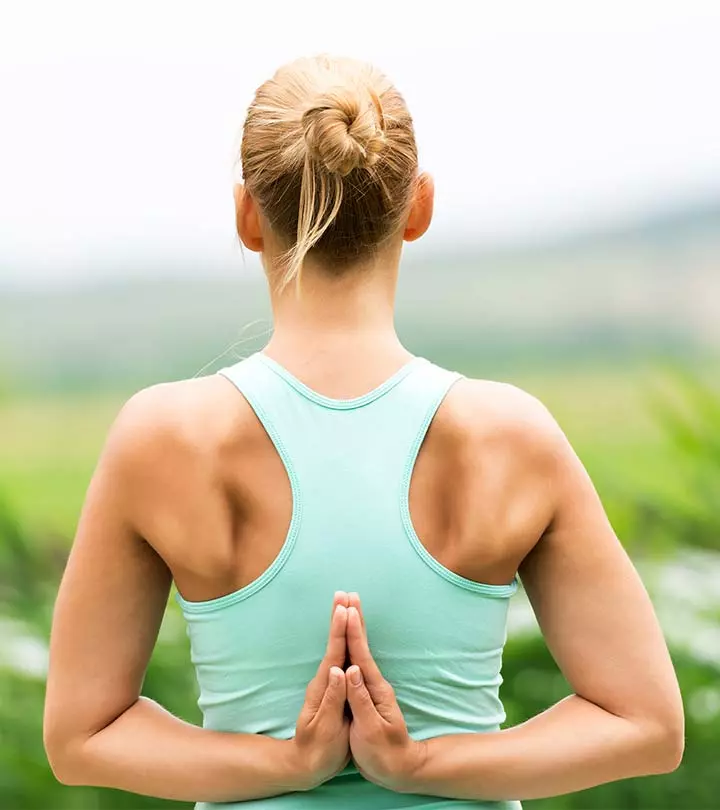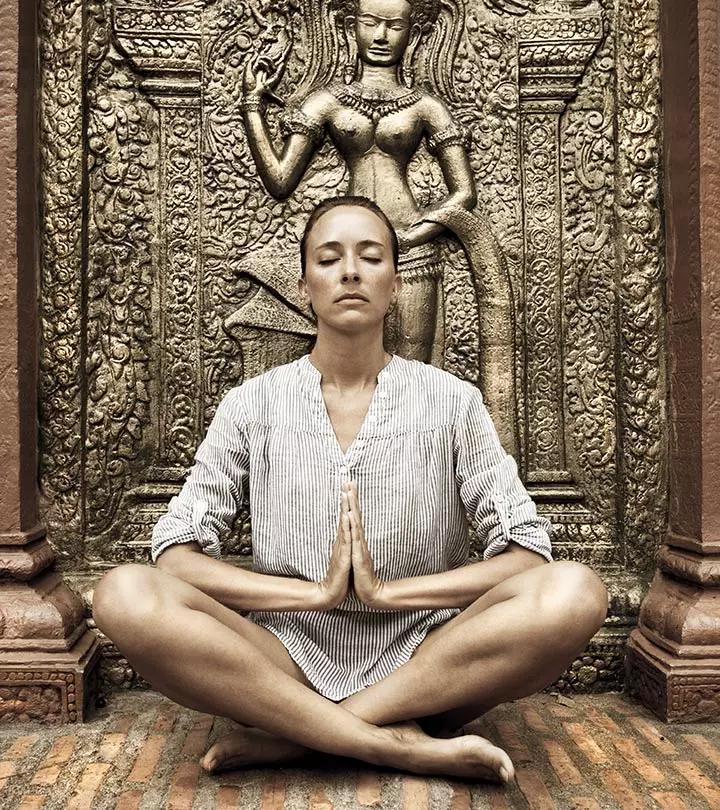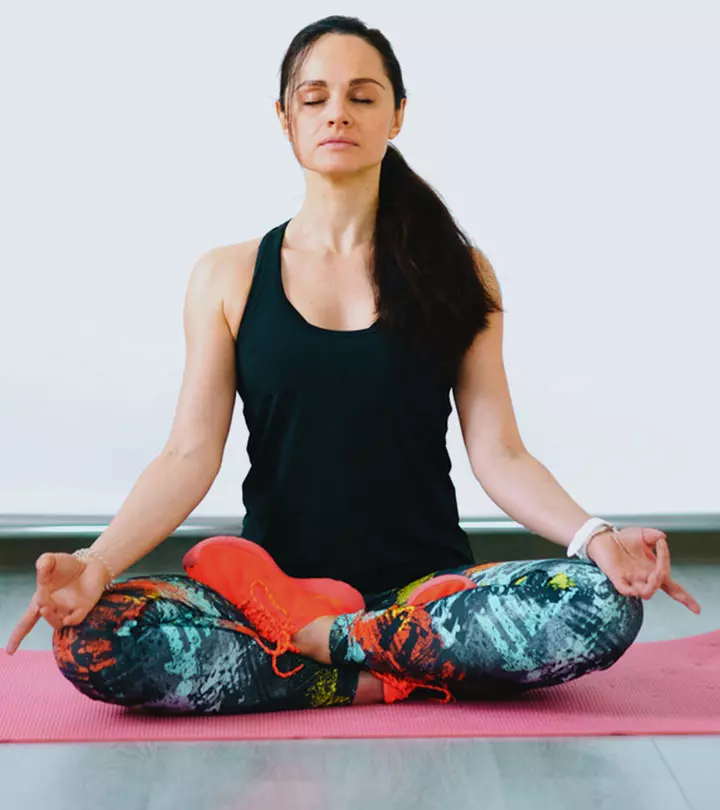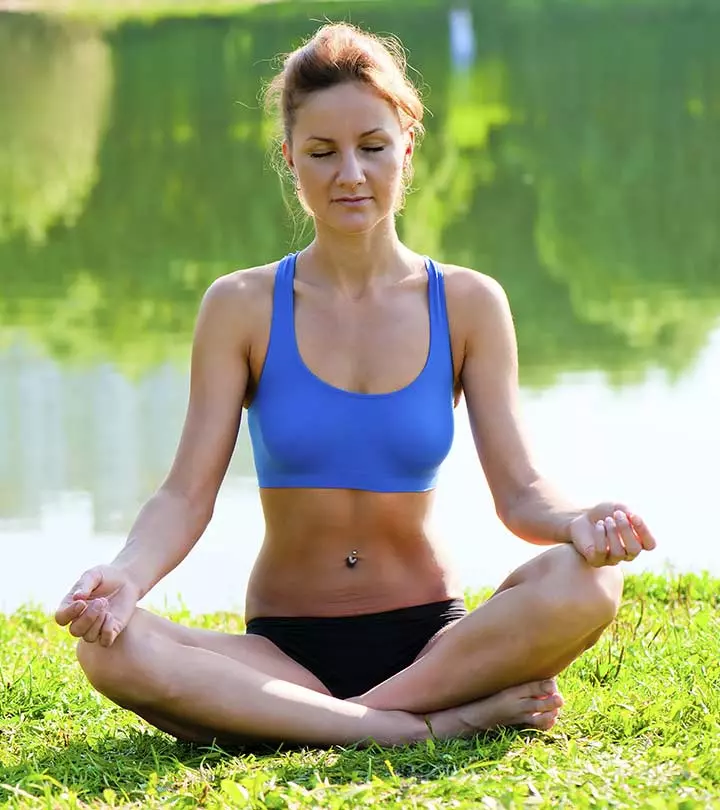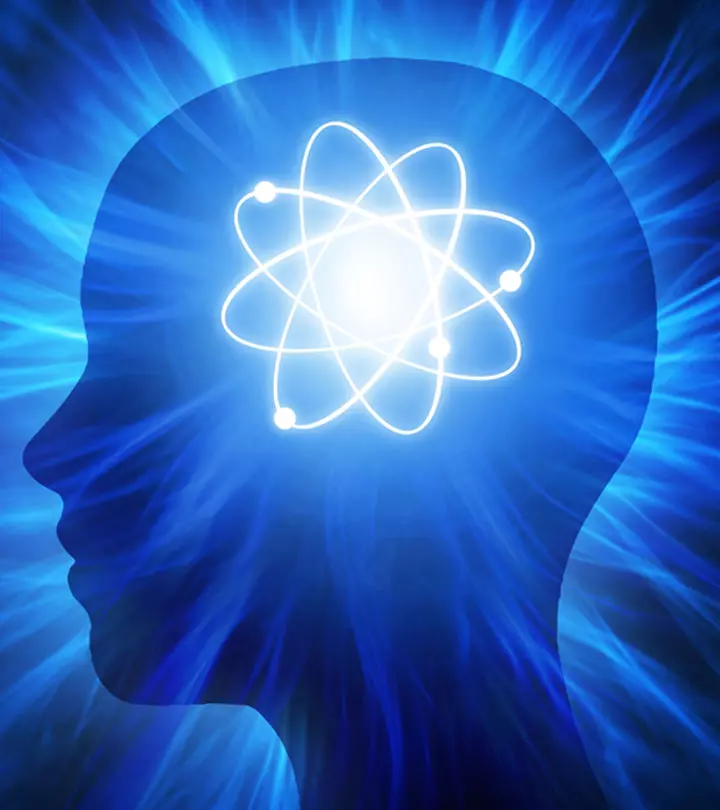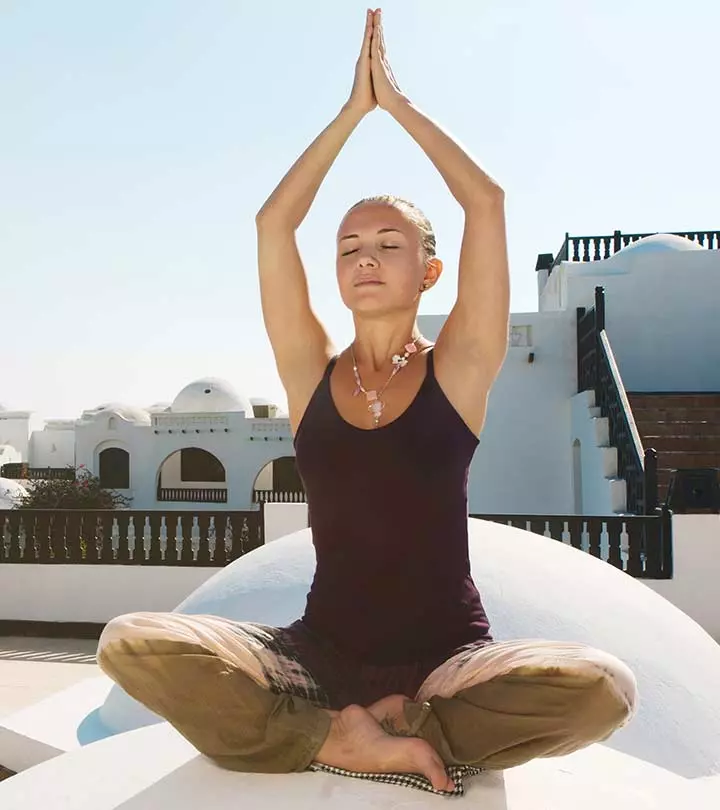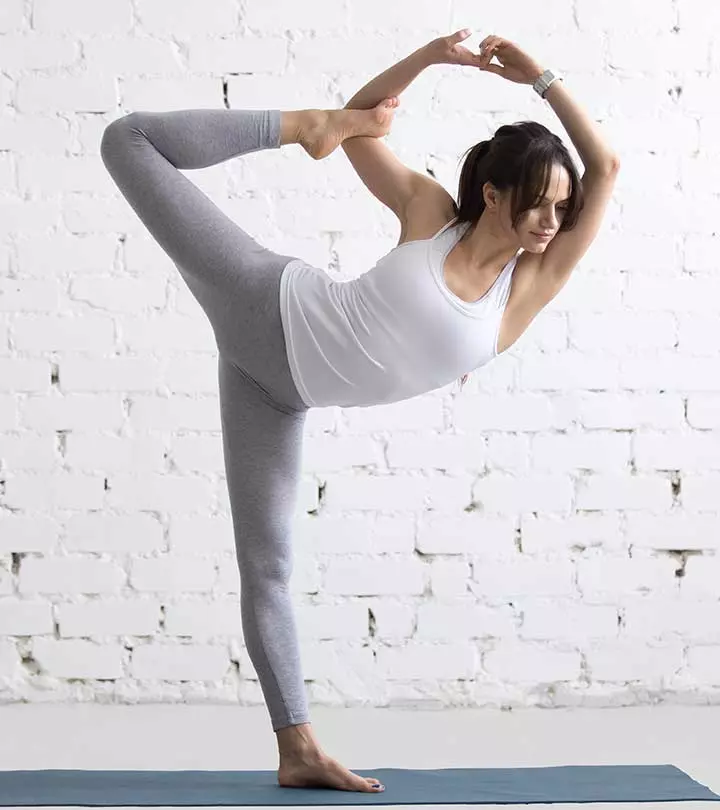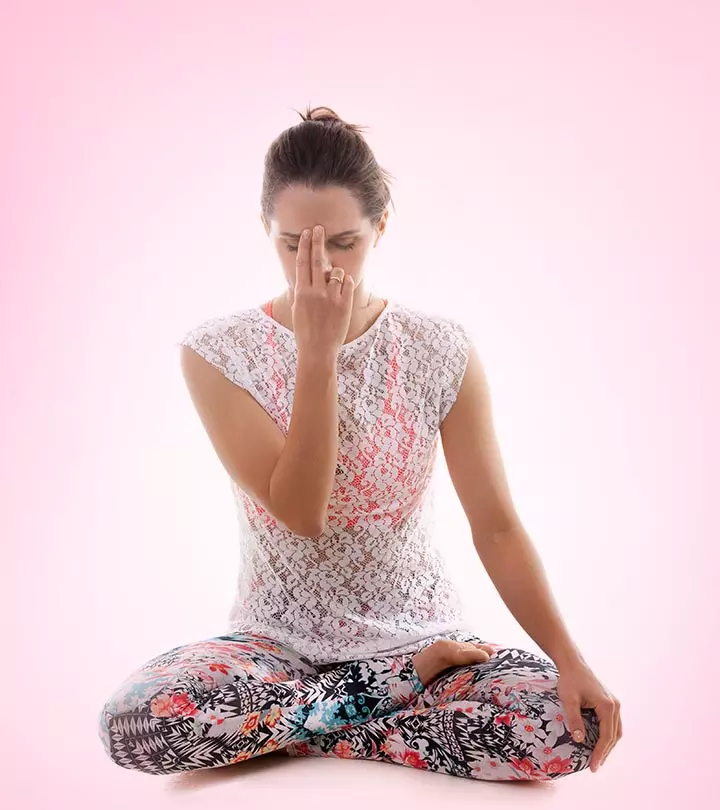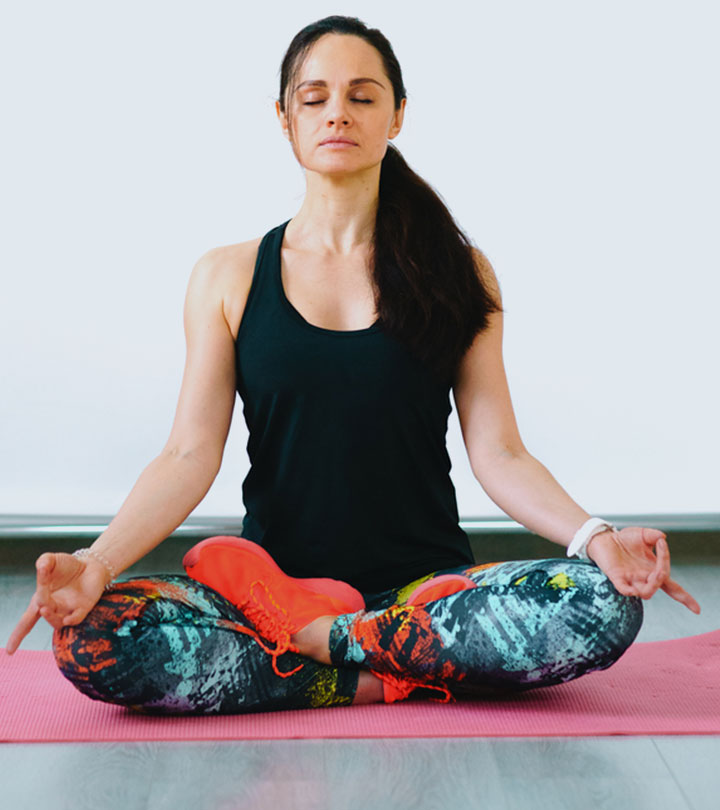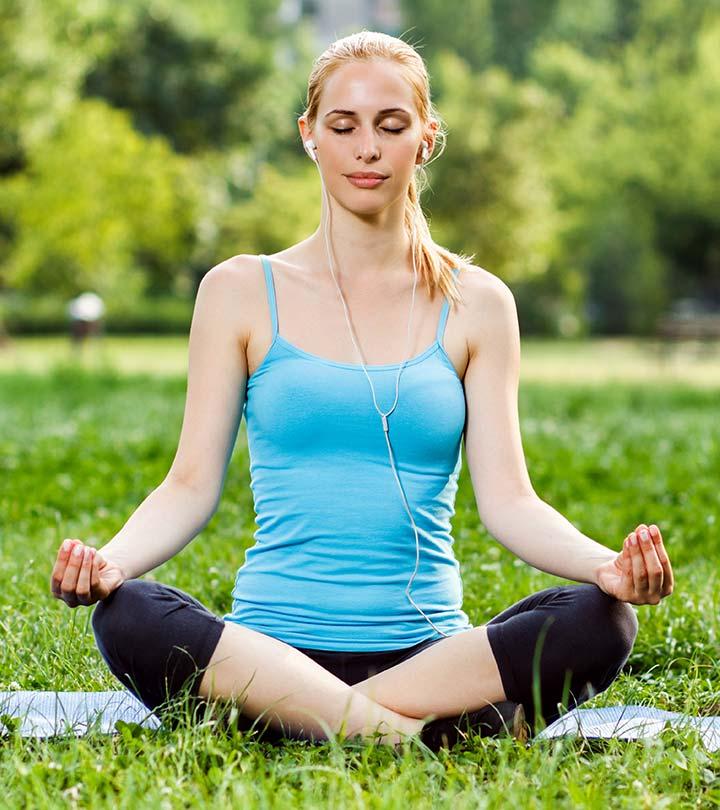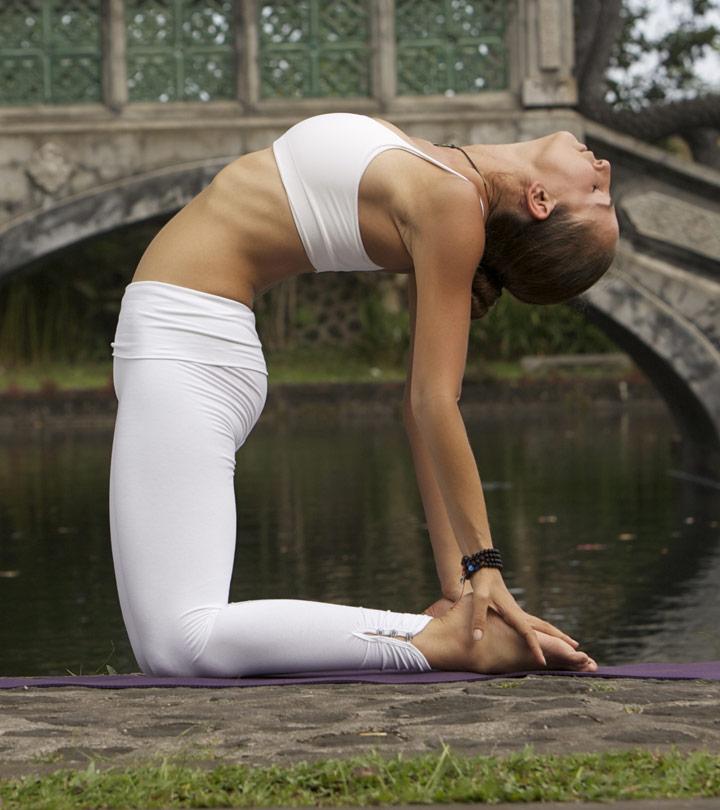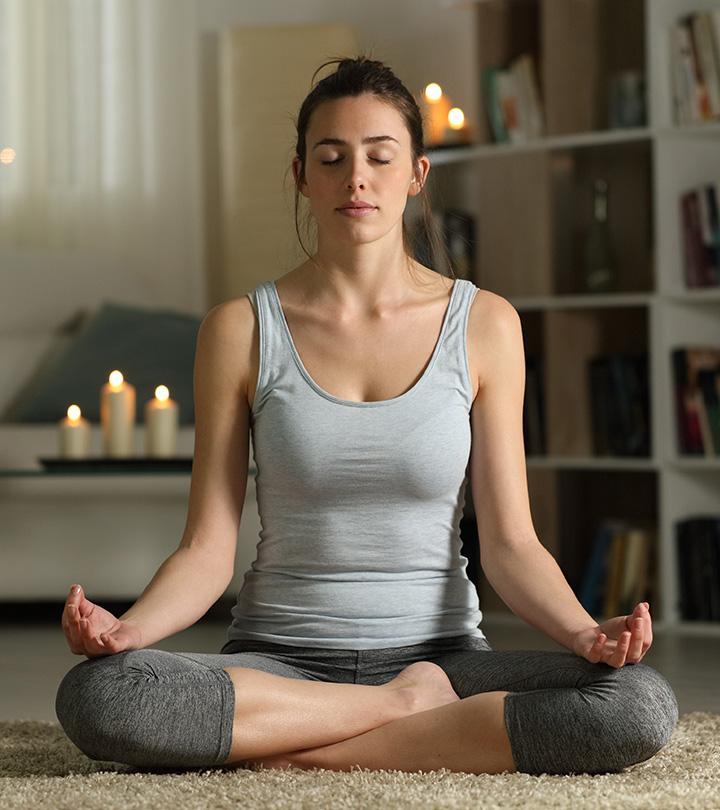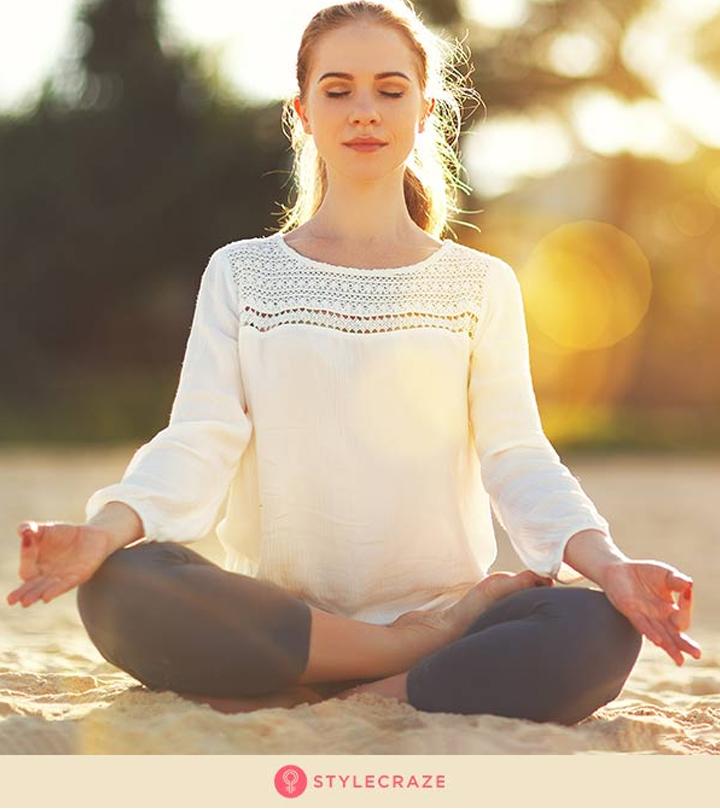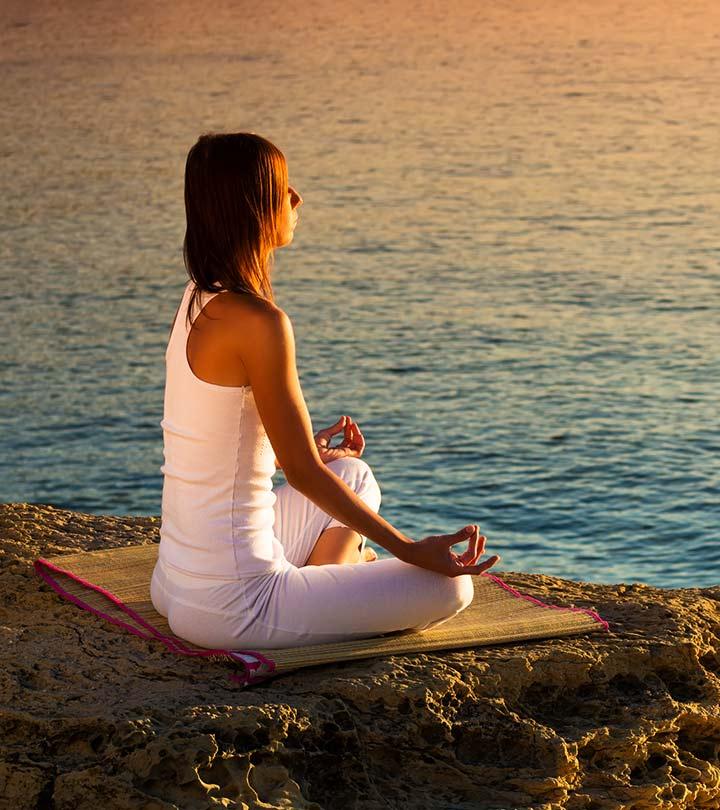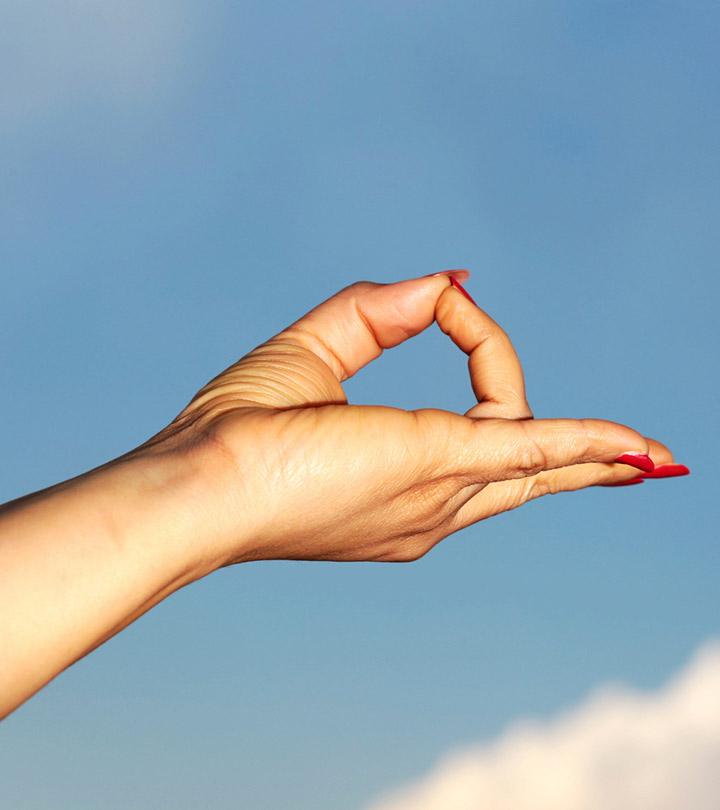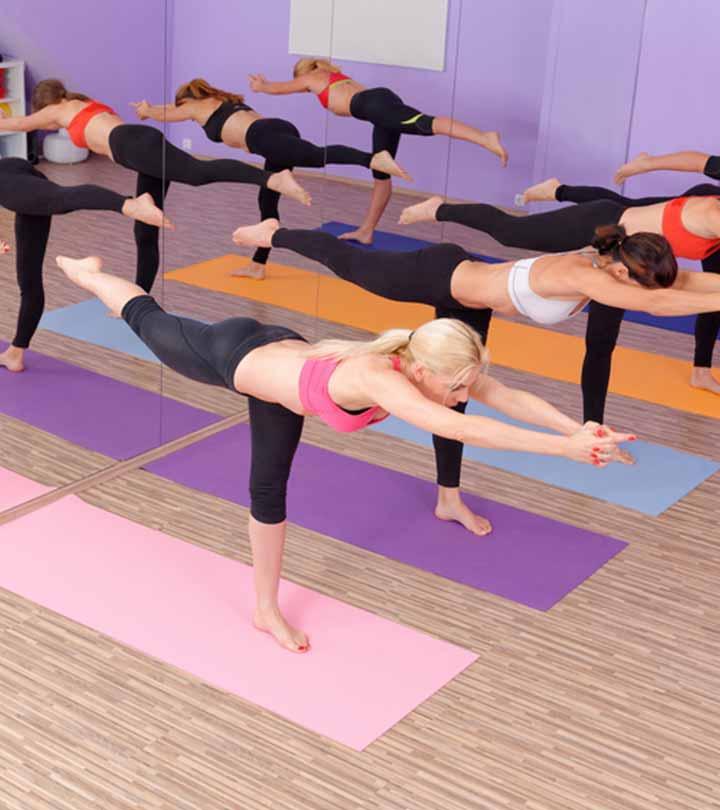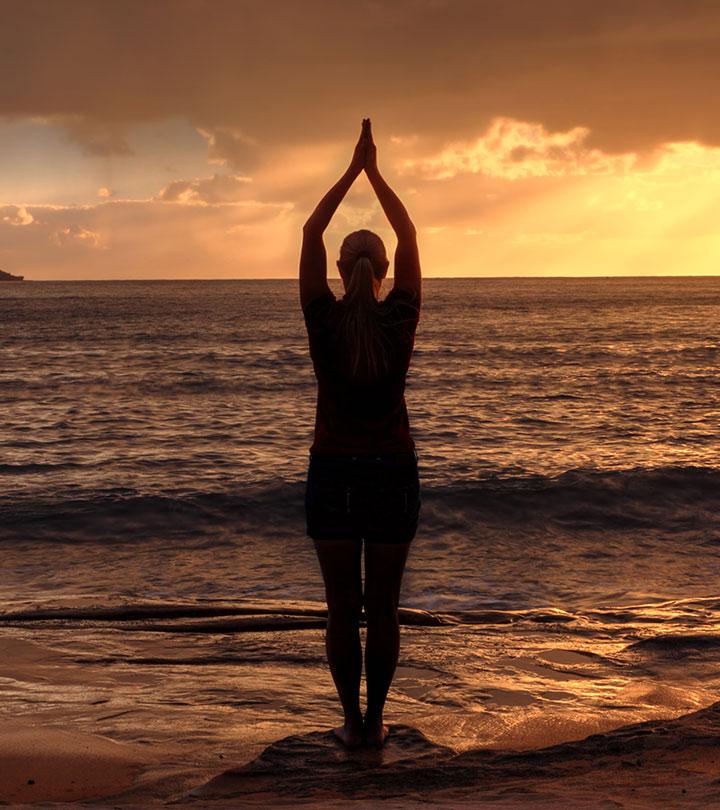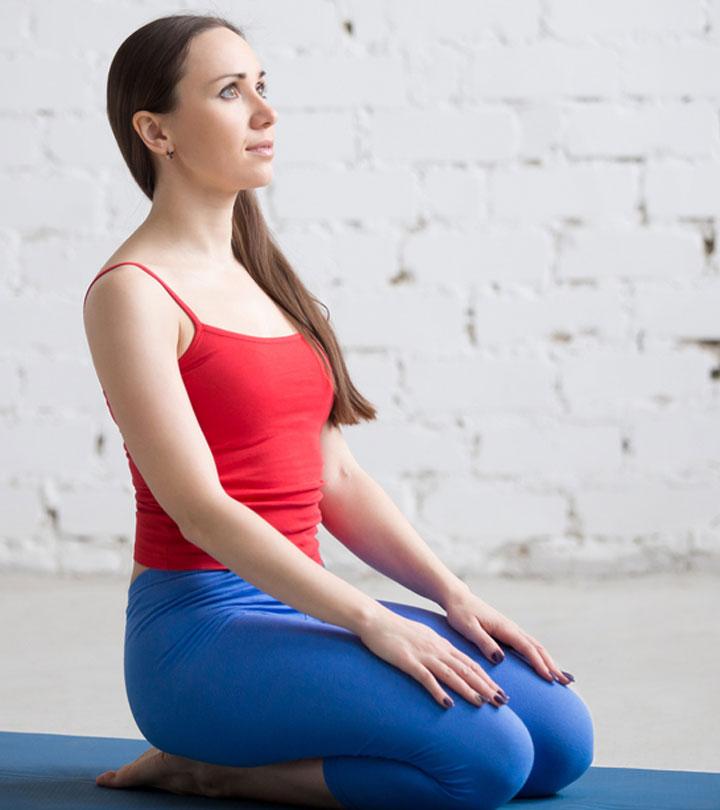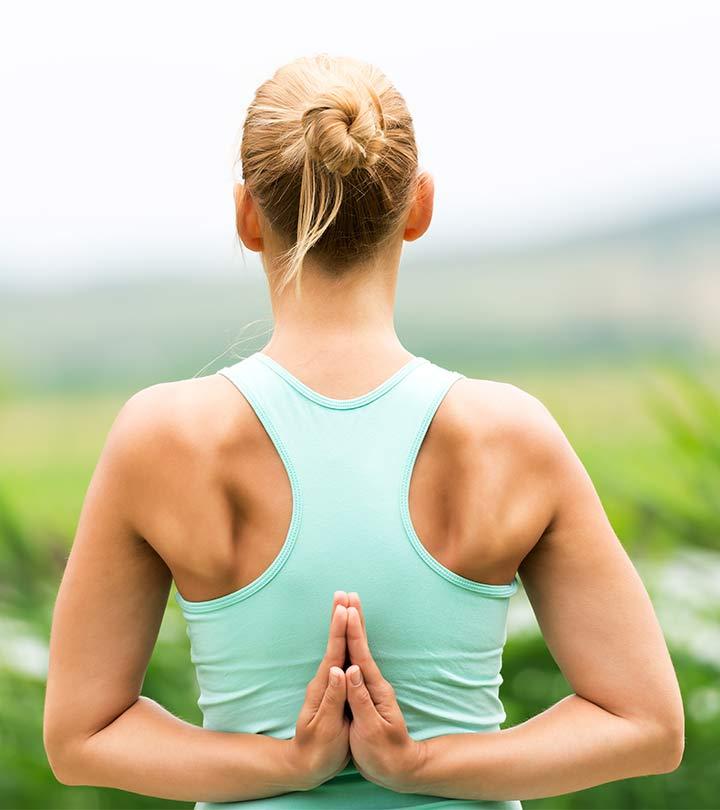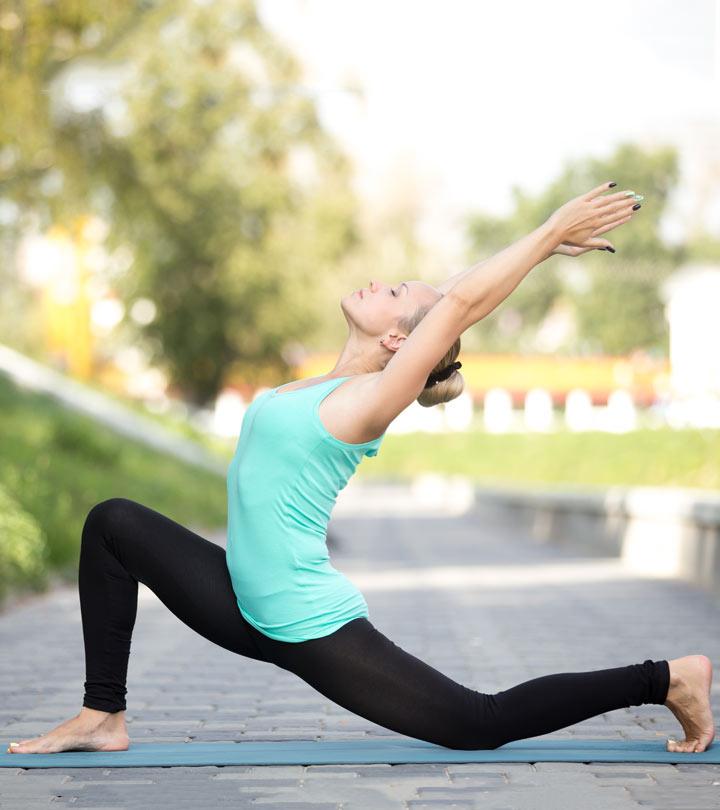Rocket Yoga – What Is It And What Are Its Benefits?
Learn how this modified version of Ashtanga poses can improve posture and health.
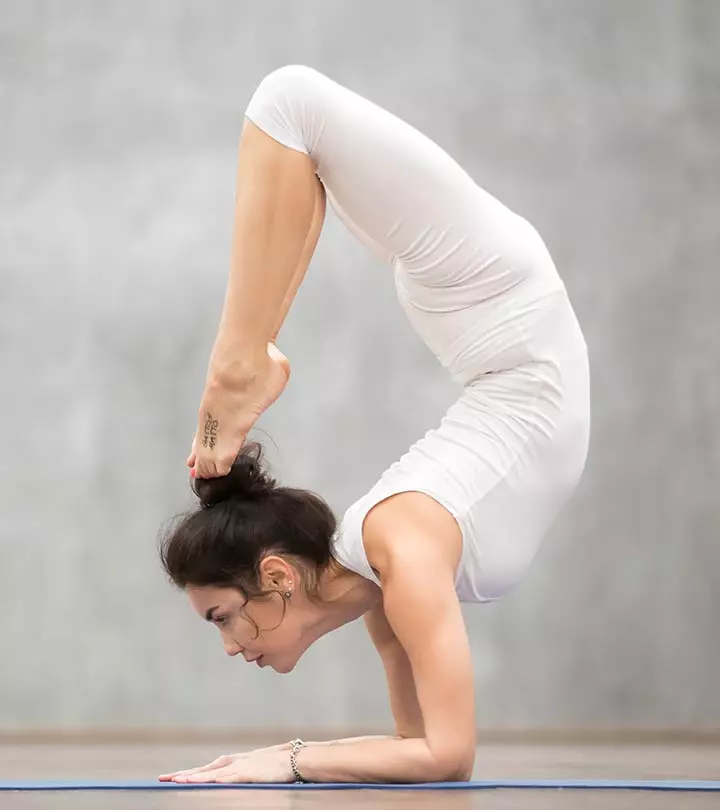
Image: Shutterstock
For all those who find Ashtanga Yoga too difficult, Rocket Yoga is a great alternative. And how does it accomplish this? Rocket Yoga was designed to make Ashtanga Yoga, which is a physically difficult form of yoga, more accessible. Rocket Yoga’s benefits are also numerous- it builds self-confidence and leads you down the path of self-control, self-discipline, self-improvement, self-realization, and self-transformation.
It loosens up the stiffness of the traditional Ashtanga practice, making it more accessible to you. It removes your blockages, allows for seamless practice, and much more.
Here’s everything you need to know about Rocket Yoga. Scroll down and take a look!
In This Article
What Is Rocket Yoga?
Rocket Yoga is a modification of the traditional Ashtanga Yoga and was put together by a person called Larry Schultz, who studied Ashtanga Yoga under the founder of Ashtanga Yoga, Sri K. Pattabhi Jois for nine years in Mysore.
Rocket Yoga is an attempt by Larry to make Ashtanga Yoga more accessible to western practitioners. It was in the 1980s in San Francisco that he developed Rocket Yoga. The name was given by Bob Weir of ‘The Grateful Dead’ band because he thought Rocket Yoga was quick and easy.
It is. Rocket Yoga is fast-paced and has a dynamic flow. Its structure is similar to that of Ashtanga Yoga, consisting of Surya Namaskar, standing poses, seated poses, twists, and bends.
In Rocket Yoga, students can modify and make their interpretation of the traditional asana. If they get stuck with a pose, they can either skip it or find easier ways to practice it instead of rigidly sticking to the pattern. It helps with self-awareness and builds self-esteem.
Therefore, Rocket Yoga has become widely accessible, enabling even those with physical problems to try it. It is a smooth process of breath and movement. It may look like a purely physical process, but it helps clear your mind as well.
What makes Rocket Yoga stand apart is that it breaks the concept of hierarchy. You can pick and choose the asanas and practice them without necessarily following a linear format.
No wonder it has many celebrity followers like Madonna, Willem Dafoe, Sting, and Christy
Turlington!
 Fun Fact
Fun FactRocket Yoga is divided into three categories. They are:
Rocket I
Rocket I is similar to the primary series of Ashtanga Yoga that focuses on hip openers, forward bends, and core strength. It also includes the Rocket special arm balances and inversions.
Rocket II
The Rocket II is a modification of the second series of Ashtanga Yoga. It consists of backbend techniques and spinal twists of seated poses of the Ashtanga intermediate series that complement Rocket I well.
Rocket III
Rocket III brings together the poses of Rocket I and Rocket II. It includes all the twists, folds, and balances to help you build strength and flexibility.
Now, let’s learn about a few exciting Rocket Yoga poses.
Rocket Yoga Poses
Arm balances and inversions form the core of Rocket Yoga. Even handstands, headstands, and forearm stands help you rocket ahead.
But if practicing these becomes difficult, you can always find a way to make it easier by taking the support of a wall, asking somebody to help, or learning tricks to overcome your fear.
Following are some asanas, practiced in Rocket Yoga:
- Astavakrasana (Eight Angle Pose)
- Bakasana (Crane Pose)
- Vrischikasana (Scorpion Pose)
- Mayurasana (Peacock Pose)
- Salamba Sirsasana ( Supported Headstand)
- Tadasana
- Chaturanga Dandasana
1. Astavakrasana (Eight Angle Pose)
About The Pose: Astavakrasana or the Eight Angle Pose is an asana named after a sage called Ashtavakra, who was born crooked in eight places due to a curse. It is an advanced level asana. Practice it in the morning on an empty stomach. Hold the pose for 60 seconds.
Benefits: Astavakrasana strengthens your wrists, arms, and shoulders. It tones your inner thighs and abdomen. It improves your sense of balance and eliminates toxins from the body.
2. Bakasana (Crane Pose)
About The Pose: Bakasana or the Crane Pose resembles the stance of a crane. It is an intermediate-level asana. Practice it in the morning or evening on an empty stomach and with clean bowels. Hold the pose for 30 to 60 seconds.
Benefits: Bakasana increases your physical and mental strength. It enhances the flexibility of your body and improves your endurance capacity. It also stretches your upper back well.
To know more about the pose and its procedure, click here: Bakasana
3. Vrischikasana (Scorpion Pose)
About The Pose: Vrischikasana or the Scorpion Pose is an asana that resembles the stance of a scorpion. It is an advanced-level pose. Practice it in the morning on an empty stomach or evening after a gap of 4 to 6 hours from your last meal. Hold it as long as you are comfortable in it.
Benefits: Vrischikasana slows down the aging process and improves the blood flow to the brain and pituitary glandi A small endocrine gland at the base of the brain that releases hormones to control growth, metabolism, and reproduction. . The pose also loosens your back and strengthens your arms.
4. Mayurasana (Peacock Pose)
About The Pose: Mayurasana or the Peacock Pose is an asana that looks like a peacock walking around with its feathers down. It is an intermediate-level asana. Practice it in the morning on an empty stomach and clean bowels. Hold the pose for 30 to 60 seconds.
Benefits: Mayurasana cures constipation and prevents diabetes. It strengthens your head, lungs, and neck. The asana detoxifies your body, calms your mind, and increases your focus.
5. Salamba Sirsasana (Supported Headstand)
About The Pose: Salamba Sirsasana or the Headstand is a complete inversion of the body and is called the king of all asanas. It is an advanced pose. It is best to practice it in the morning on an empty stomach and clean bowels. Hold the pose for 1 to 5 minutes.
Benefits: Salamba Sirsasana relieves stress and mild depression. It stimulates your pituitary and pineal glandsi A small endocrine gland located in the brain that secretes melatonin, a hormone that helps regulate the body's sleep cycle. . The pose is therapeutic for asthma, sinusitisi An inflammation of the tissue lining the sinuses triggered by cold, allergy (acute), infection or growth (chronic). , and insomnia.
6. Tadasana (Mountain Pose)
About The Pose: It keeps your mind focused. Stand with your feet together, align your body, and breathe deeply to enhance awareness and alignment. It is the foundation for various yoga poses. Start your morning routine with this pose to improve mindfulness. Hold the pose for 30 seconds to a minute if you are a beginner. You can extend the duration with time.
Benefits: It improves your posture, strengthens the core and legs, and promotes body awareness. It reduces stress and balances the nervous system.
7. Chaturanga Dandasana (Four-Limbed Staff Pose)
About The Pose: It resembles a low plank, where the body remains parallel to the floor and is supported by the toes and palms with elbows near the torso at a 90-degree angle. Do this on an empty stomach, early in the morning or in the evening, a few hours after meals. Hold it for 15 to 30 seconds.
Benefits: It builds upper body strength, tones the muscles, improves core stability, enhances wrist and arm strength, aligns the spine, and improves posture.
 Quick Tip
Quick TipBenefits Of Rocket Yoga
- Rocket Yoga stimulates your nervous system.
- It promotes change and freedom in yoga practice.
- It makes you stronger, lighter, and more flexible.
- Rocket Yoga improves your balance, strengthens your muscles, and increases your consciousness.
- It cleanses your body from within.
Erika Sykes, a journalist, shared her experience with rocket yoga in her blog. She wrote, “Afterwards I felt a noticeable difference from my typical morning stiffness, which was invigorating (i).”
Infographic: Top 5 Rocket Yoga Asanas
An ideal alternative to Ashtanga Yoga, Rocket Yoga is for anyone who wishes to indulge in vigorous asanas minus the difficulty quotient for increased energy and strength. It is an accessible method that benefits not only the body but also helps practice mindfulness. Check out the infographic below to get familiar with the different types of Rocket Yoga asanas you can practice. Illustration: StyleCraze Design Team
Rocket Yoga is a simplified version of the much more difficult Ashtanga Yoga. It includes Sun Salutations, standing and seating poses, twists, and bends. The benefits of Rocket Yoga are numerous as the poses work on the hips, core, arms, wrists, shoulders, upper back, head, lungs, neck, and spine. So, it is ideal for detoxification, stress relief, building strength, balance and flexibility, stimulating the nervous and digestive systems for improved digestion, maintaining cardiovascular health, and slowing down the aging process. So, take up Rocket Yoga to empower yourself both physically and mentally.
Frequently Asked Questions
Is Rocket Yoga better than Ashtanga Vinyasa Yoga?
Both are similar. Rocket Yoga is simply an easier and more doable version of Ashtanga Vinyasa Yoga.
What does ‘Rocket’ mean in Rocket Yoga?
Rocket refers to the fast speed with which you can learn and practice Rocket Yoga.
Is rocket yoga good for weight loss?
Yes, it does help one shed calories and achieve a toned physique. It is a fast-paced activity and is comparatively more vigorous than other forms of yoga.
What is rocket flow yoga?
Rocket flow yoga is another name for rocket yoga. It is free-flowing and more dynamic in nature than other traditional forms of yoga.
Key Takeaways
- Rocket yoga is the modification of traditional Ashtanga yoga poses to make it more accessible and easy.
- It is a fast-paced and smooth process of breathing and movements, which helps in increasing flexibility and improves balance.
- Rocket yoga includes inversions, back-bending, spinal twists, and arm balances, which help build strength.
- Some of the best rocket yoga poses include the peacock pose, scorpion pose, crane pose and supported head-stand, which helps improve blood flow and relieves stress.
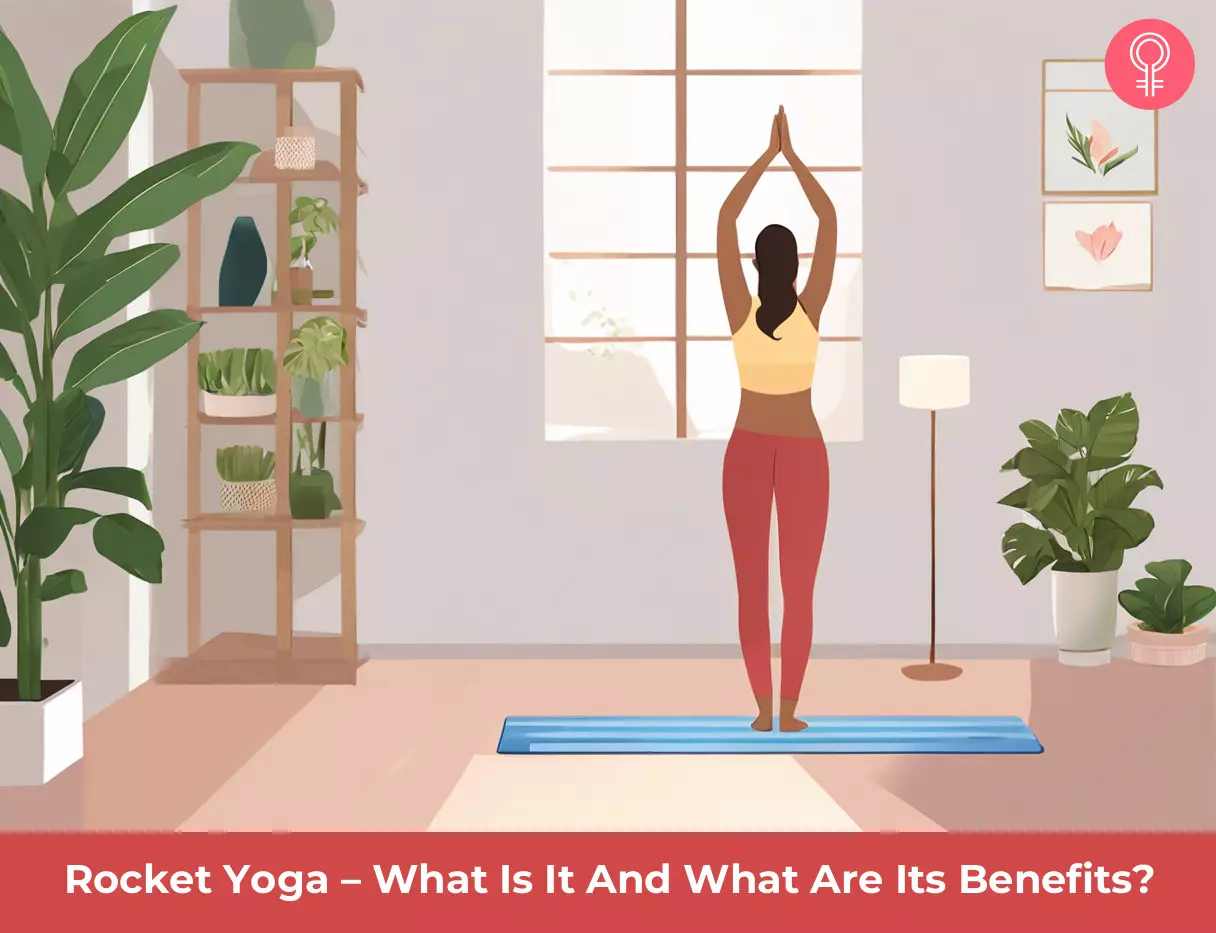
Image: Stable Diffusion/StyleCraze Design Team
Curious about rocket yoga? Discover the essence of this dynamic and invigorating practice and learn about its unique benefits from the video below.
Personal Experience: Source
StyleCraze's articles are interwoven with authentic personal narratives that provide depth and resonance to our content. Below are the sources of the personal accounts referenced in this article.
i. A Yoga Experiencehttps://regionalexposure.wordpress.com/2014/08/29/a-yoga-experience/
Read full bio of Sri Yogi Anand
Read full bio of Arshiya Syeda
Read full bio of Moksha Gandhi





